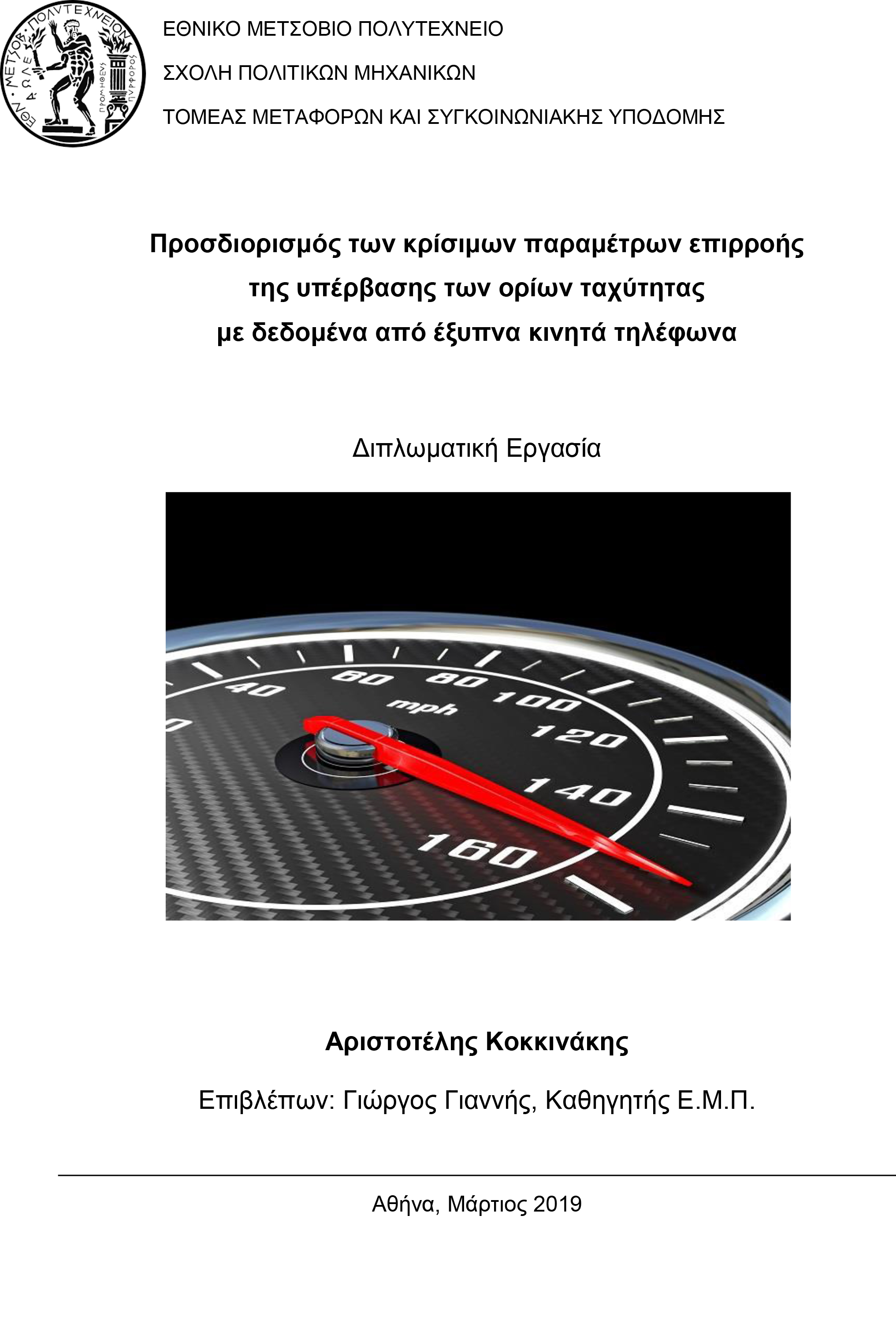
The aim of this Diploma Thesis is to identify the critical driving parameters that affect speeding using data from smartphones. To achieve this objective, data collected from sixty- eight drivers who participated at a naturalistic driving experiment for fifteen months are analyzed. The analysis was carried out with the use of statistical method of linear regression. Through the linear regression models, it was examined whether driving characteristics recorded by smartphone sensors affect and can therefore predict the percentage of driving duration with speed above the speed limit. Four statistical linear regression models forecasting the percentage of driving duration with speeding were developed: one general model and three models for each road type (urban, rural, highway). The results revealed that all six parameters, distance, high intensity harsh accelerations and brakings, harsh cornerings, average deceleration and mobile usage, were statistically significant in the regression models. For the general model, the number of high intensity harsh brakings had the most significant impact, whereas for each type of road separately, distance was the most significant parameter.
| ID | ad82 |
| Presentation | |
| Full Text | |
| Tags | big data, driver behaviour, naturalistic driving, speed, statistical modelling, telematics |







